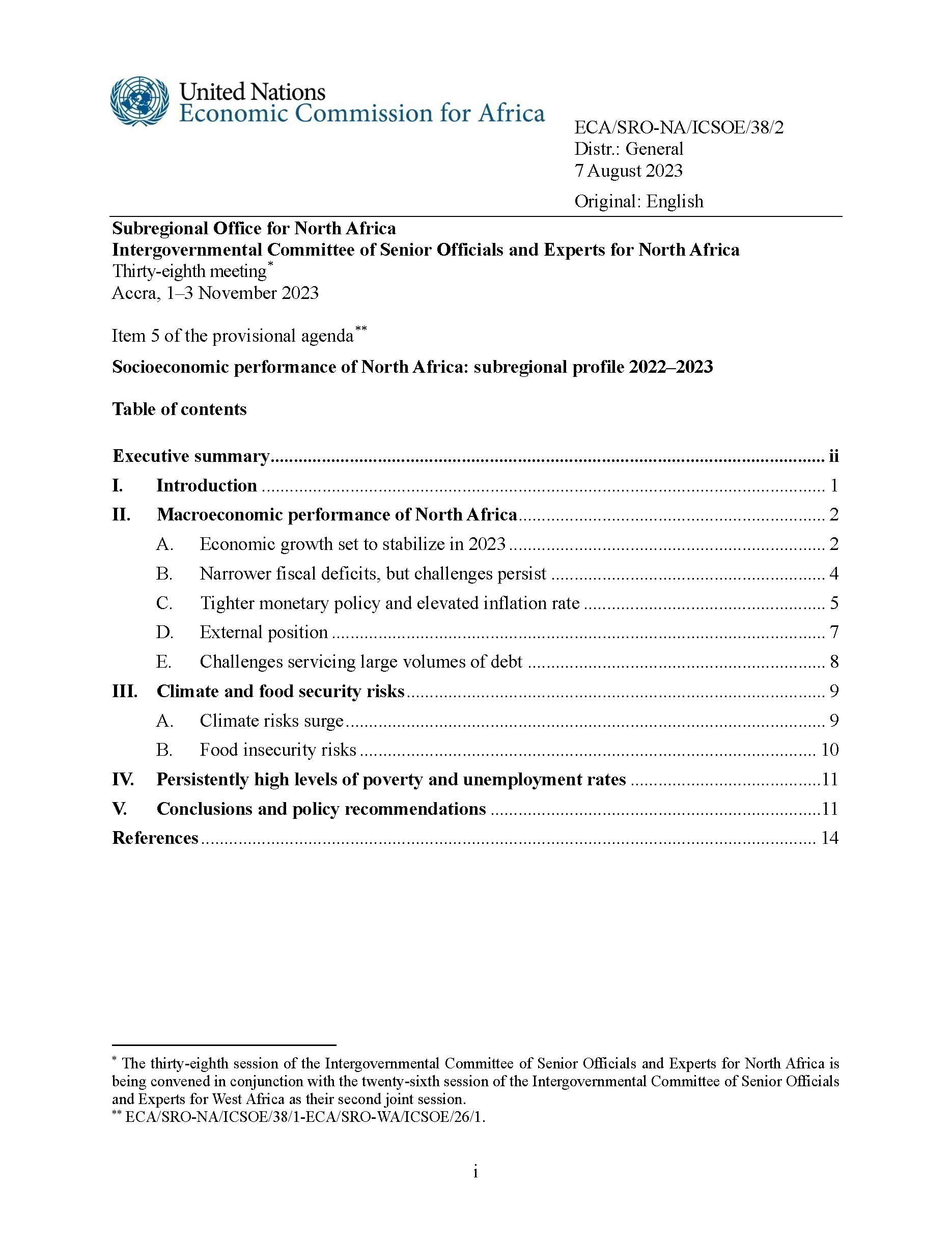In 2022, North Africa was confronted with weak external demand, high borrowing costs and adverse weather conditions. The annual growth of real gross domestic product (GDP) in the subregion declined to 3.9 per cent in 2022, from 4.9 per cent in 2021. The external shock from the war between the Russian Federation and Ukraine, which started in February 2022, was a key factor behind the decisions of Egypt and Tunisia to request additional financial assistance from the International Monetary Fund (IMF) and Gulf States. In contrast, Algeria and Mauritania benefited, at least in the short term, from the global commodity price shock: high hydrocarbon prices drove high export revenues for Algeria, and strong gold production growth and higher international prices significantly increased gold exports from Mauritania. Despite a rise in global oil prices, the economy in Libya contracted in 2022, as a result of the blockade of oilfields in the first half of the year, which significantly reduced oil production. In addition, Libya is still striving to recover from conflict.


